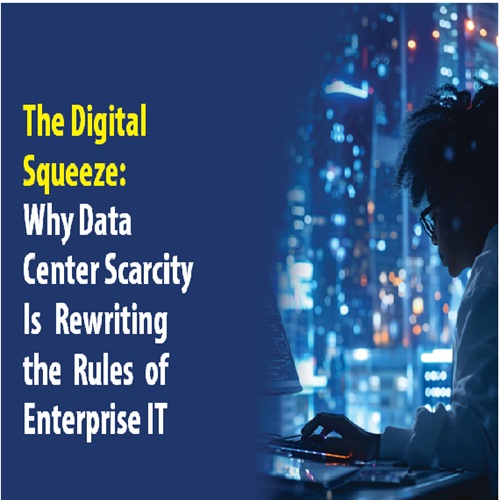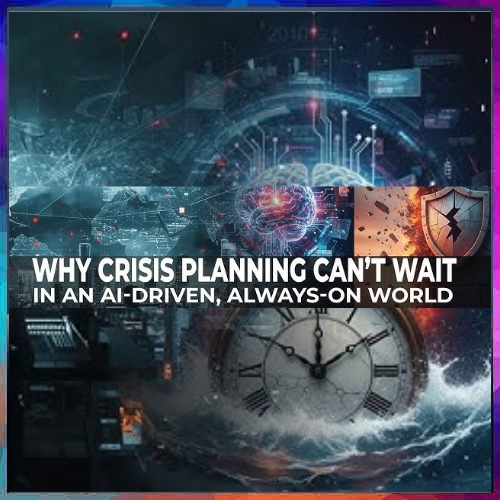
Rents are soaring, power is scarce,and hyperscalers are booking capacity years in advance. CBRE’s 2025global trends report reveals an infrastructure reckoning that enterprises can no longer afford to ignore.
Data centers have long operated in the background of enterprise digital strategies, quietly scaling to support cloud adoption, analytics platforms, AI innovation, and global business expansion. But in 2025, that status quo has ruptured. According to CBRE’s Global Data Center Trends 2025, a global shortage of available colocation space, historic rent inflation, and mounting power constraints have created a perfect storm—one that threatens to slow down or reshape how enterprises grow digitally. The industry has entered a phase of scarcity, and it is reshaping infrastructure planning from the ground up.
THE SUPPLY-DEMAND MISMATCH DRIVING RECORD COSTS
Vacancy rates across global colocation markets have dropped to an unprecedented 6.6%. In key metros like Northern Virginia and Amsterdam, the imbalance is even more pronounced, with rents spiking over 17% year-on-year. And this isn’t a one-off pricing correction—it reflects structural pressures that are unlikely to ease before 2026.
On one side of the equation is demand. AI workloads, GPU-heavy training clusters, and digital-first enterprise strategies are generating immense pressure on physical capacity. On the other side, supply is struggling to keep up. Power availability—not land—is now the gating factor for most new data center projects. Grid congestion, permitting delays, and government moratoriums are holding back even shovel-ready developments. What little capacity comes online is rapidly absorbed, often before enterprises have a chance to bid.
POWER, NOT REAL ESTATE, IS THE NEW INFRASTRUCTURE BOTTLENECK
Unlike in previous growth cycles, it’s no longer real estate availability or fiber access that determines the viability of new data center development. It’s power. Utilities in major markets like Dublin, Frankfurt, and parts of Northern Virginia are overburdened. Some cities, like Amsterdam and Singapore, have introduced strict controls or outright freezes on new facilities to protect urban energy sustainability targets.
The result is a paradox: colocation providers are sitting on land and blueprints—but without substations or transmission guarantees, there’s no clear path to deliver compute at scale. Even completed facilities are stalling because grid tie-ins remain years away. This tension between physical readiness and electrical scarcity is perhaps the most acute signal that infrastructure planning has hit a generational tipping point.
THE SHADOW ECONOMY OF SPECULATIVE PRE-LEASING
CBRE’s report surfaces another dynamic complicating enterprise planning: speculative pre-leasing. While hyperscalers such as AWS, Microsoft, and Google are locking in capacity years in advance for AI and cloud expansion, a growing number of non-hyperscaler entities are also entering the fray. Some are hedge-backed infrastructure investors pre-booking facilities to resell later at a premium. Others are multinationals reserving space defensively, not for active deployment, but to guard against future shortages.
This practice makes market visibility increasingly unreliable. Enterprises looking for available space may find it technically exists, but in reality, it’s contractually off the table. Worse, there’s little visibility into how much of this reserved capacity will actually go live. The rise of speculative booking is distorting supply-demand signals and introducing financialization into what used to be a procurement- driven market.
AI, COOLING, AND THE NEXT GENERATION OF COMPUTE-READY FACILITIES
As AI adoption accelerates, infrastructure expectations are shifting radically. Traditional rack densities of 10–12 kW are no longer sufficient. AI clusters, especially those relying on GPUs or tensor processing units (TPUs), demand 30–50 kW per rack, with advanced liquid cooling systems to handle the thermal load.
For colocation providers, this requires a fundamental redesign of space, airflow, and energy provisioning. But for enterprises, it presents a harder challenge: retrofitting current deployments isn’t always viable, and migrating high-density workloads into new facilities—if they can even be secured—is complex and costly. As a result, AI- driven infrastructure needs are colliding with physical realities that most markets aren’t yet ready to accommodate.
THE RISE OF SECONDARY MARKETS AS STRATEGIC ALTERNATIVES
In response to Tier-1 congestion, enterprise and hyperscale buyers alike are pivoting to secondary markets—cities once viewed as edge or support zones. Locations such as Madrid, Santiago, Hyderabad, and Richmond are gaining attention not only for their lower leasing costs, but also for their access to uncongested power grids, less stringent zoning regulations, and emerging subsea cable infrastructure.
These locations offer a rare mix of growth opportunity and strategic flexibility. For enterprises willing to trade a few milliseconds of latency for long-term scalability and lower TCO, the argument for diversification is becoming harder to ignore. The narrative is shifting from “how close to a cloud zone can I be?” to “where can I reliably build without hitting a wall in two years?”
WHAT ENTERPRISES MUST DO NOW: PLANNING IN YEARS, NOT QUARTERS
As the infrastructure crunch deepens, reactive procurement models are no longer viable. Enterprises must extend their planning horizon—24 to 36 months, minimum—and secure commitments ahead of actual workload migrations. The traditional lead times of 6 to 12 months for new colocation capacity are gone, replaced by fierce competition and pre-booked build slots.
Enterprises also need to ask harder questions when choosing data center partners. Is the power already allocated? Can facilities support high-density AI loads? Are sustainability metrics aligned with corporate ESG goals? Flexibility in contract structure, transparency on PUE (Power Usage Effectiveness), and upgrade paths for cooling and power capacity are now boardroom concerns—not just the domain of facilities teams.
OPTIMIZING WHAT YOU HAVE: EFFICIENCY AS A STRATEGIC DISCIPLINE
Faced with higher costs and limited expansion options, enterprises must also turn inward. Maximizing the efficiency of existing infrastructure becomes mission-critical. Workload orchestration, automation of resource scaling, smarter cooling management, and consolidation of underutilized environments can deliver measurable savings.
Some organizations are embracing AI not just as a workload, but as a tool to optimize IT operations. Using machine learning for predictive energy modeling, capacity forecasting, and dynamic workload distribution is gaining traction. These practices don’t just cut costs—they extend the lifespan of current infrastructure while buying precious time to plan future migrations more strategically.
ESG PRESSURES TIGHTEN THE LENS ON INFRASTRUCTURE CHOICES
Environmental, Social, and Governance (ESG) accountability is another force reshaping enterprise infrastructure decisions. Investors, regulators, and customers are now scrutinizing not just how much compute power companies use—but how sustainably they use it. Data center providers that can’t deliver on carbon-neutral operations, renewable power sourcing, or responsible water use are becoming harder to justify in corporate sustainability reporting.
This pressure dovetails with rising Scope 3 emissions tracking obligations, which force enterprises to account for the emissions footprint of their supply chain—including IT partners. As a result, data center selection is now entangled with ESG strategy, investor relations, and brand reputation. It's not just about uptime anymore— it's about impact.
A STRATEGIC RESET FOR DIGITAL INFRASTRUCTURE
In a digital economy where milliseconds define user experience and infrastructure decisions shape competitive edge, the current colocation crunch isn’t just a temporary shock—it’s a reckoning. Enterprises can no longer afford to treat data center strategy as a technical or operational concern alone. It is now a fundamental business discipline, on par with financial planning or supply chain optimization.
Those that act early—securing capacity, optimizing usage, diversifying locations, and aligning with sustainability imperatives— will position themselves for long-term success. Those that delay may find themselves priced out, boxed in, or operationally constrained just when digital velocity becomes business critical.
In this new era, digital infrastructure is not simply the plumbing of modern enterprise. It is the foundation, the frontier, and the battlefield—all rolled into one.
See What’s Next in Tech With the Fast Forward Newsletter
Tweets From @varindiamag
Nothing to see here - yet
When they Tweet, their Tweets will show up here.





























